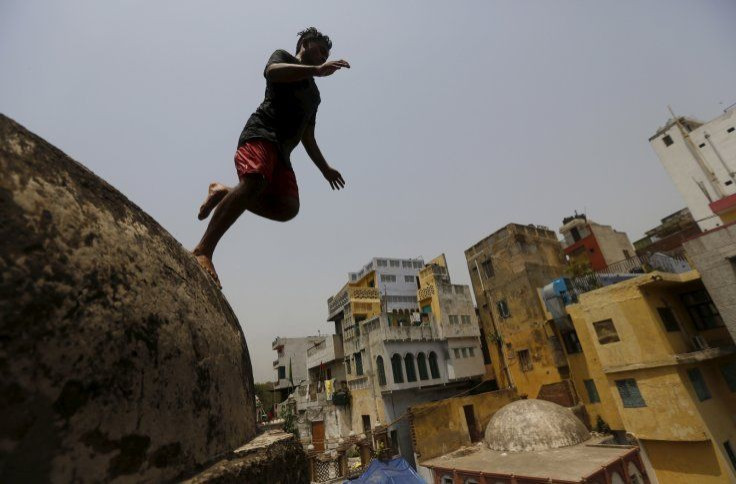India Heat Wave: Over 400 Dead As Temperatures Soar Past 110 Degrees

This story has been updated.
UPDATE, 12:29 p.m. EDT: The death toll in India has risen to 539, Reuters reports, as a deadly heat wave continues. Most of the recorded deaths have been of construction workers, the elderly or the homeless in Andhra Pradesh and Telangana, officials told the wire service. A number of other deaths have been reported in Uttar Pradesh, Odisha and West Bengal.
Original story below.
A devastating heat wave with air temperatures as high as 118 degrees Fahrenheit has caused the deaths of at least 430 people as it has swept through India, according to BBC News. Most of the fatalities have been in the southern states of Telangana and Andhra Pradesh, where more than 140 people have died since Saturday, the news service reported.
Temperatures pushed past 118 degrees in Allahabad in Uttar Pradesh and 111 degrees in the country's capital, Delhi.
"In the Indian capital particularly, no relief can be expected in the next four days. The heat wave will continue. The temperature in Pakistan is 50 degrees Celsius [122 degrees Fahrenheit], and the heat wave is coming from there," Indian Meteorological Office Director B.K. Yadav told media representatives.
A heat wave is declared when the temperature is 5 degrees or higher than the average temperature recorded on that particular day during the past three decades.
Hyderabad in southern India historically has experienced a maximum of five heat-wave days a year. This could climb to as many as 40 days a year in the future, according to the study "Climate Change Scenarios for Hyderabad: Integrating Uncertainties and Consolidation" carried out by the Potsdam Institute for Climate Impact Research in Germany.
The study on emerging megacities gives predictions up to the year 2100, taking into account emission levels.
Experts say an El Nino weather condition, leading to a warming of sea-surface temperatures in the Pacific Ocean, triggers scorching weather across Asia.
"On account of 0.8 degree warming during the past hundred years, one must expect more heat waves even without an El Nino. El Nino will increase the atmospheric temperature and hence add to the problems created by global warming," J. Srinivasan, chairman of the Divecha Center for Climate Change at Indian Institute of Science, told International Business Times.
Man-made climate change has contributed to a 60-fold increase in the likelihood of extreme temperatures since the early 1950s, according to a joint study by the China Meteorological Administration, the Canadian government and the University of Victoria in British Columbia.
Yet another collection of 22 studies, "Explaining Extreme Events of 2013 From a Climate Perspective," clearly laid the blame for 2013's heat waves on human-induced climate change.
Human-induced global warming turned 2014 into the hottest year on record. The trend may continue into 2015, given the U.S. National Oceanic and Atmospheric Administration's prediction there is a 60 percent chance the El Nino it declared this year will continue.
El Nino conditions transfer heat building in the ocean into the atmosphere.
With March 2015 breaking all records to become the hottest March on record, hotter days can be expected.
The global average concentration of carbon dioxide in the atmosphere recently crossed into a danger zone after breaching 400 parts per million. The greenhouse gas traps heat within the atmosphere.
India is the third-largest carbon emitter in the world (after China and the U.S.), and it has refused to announce a peak year, citing growth imperatives. It has insisted on a common but differentiated responsibility based on equity that calls upon developed nations to scale up mitigation and allow developing nations to grow.
© Copyright IBTimes 2024. All rights reserved.






















